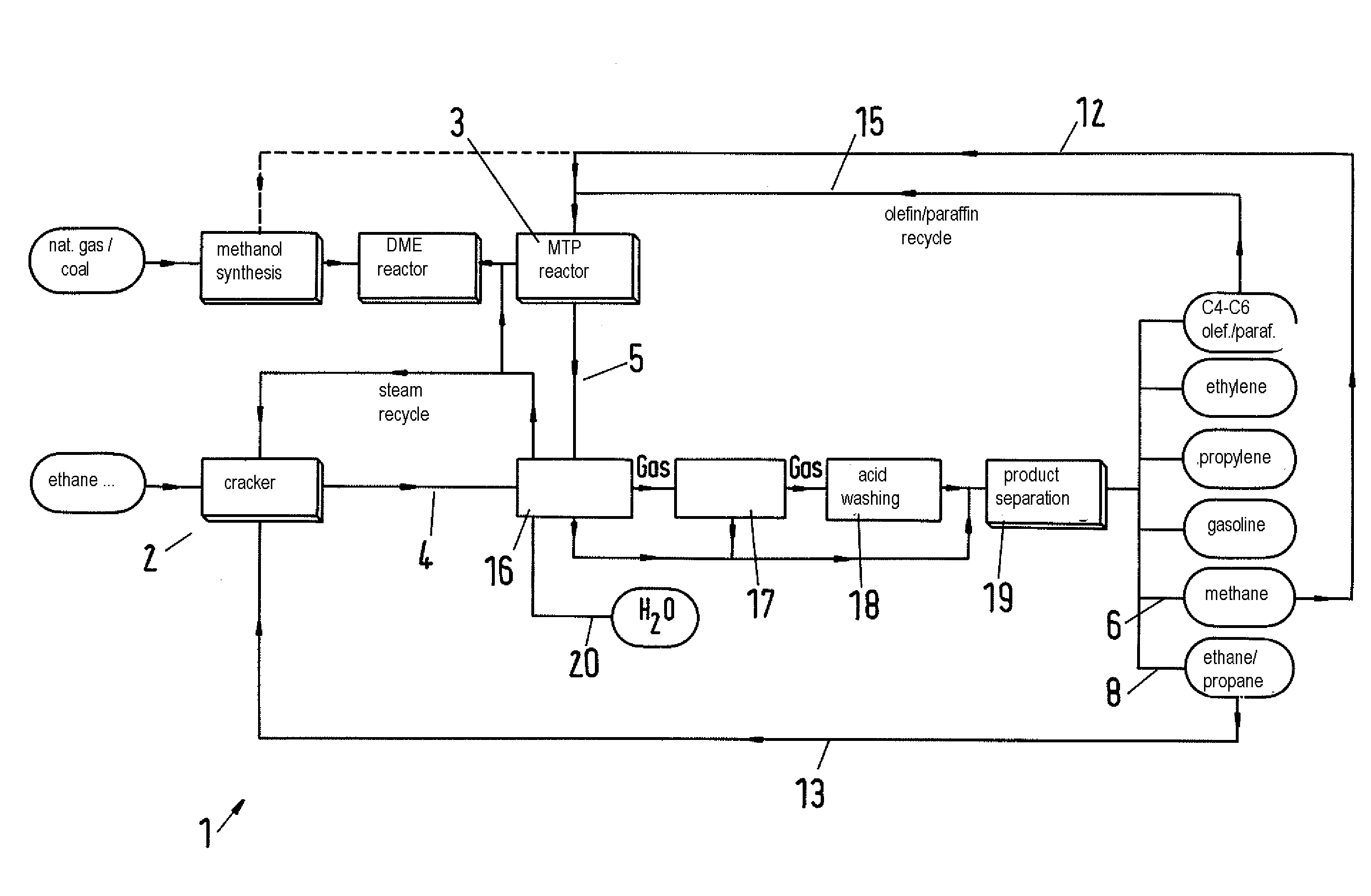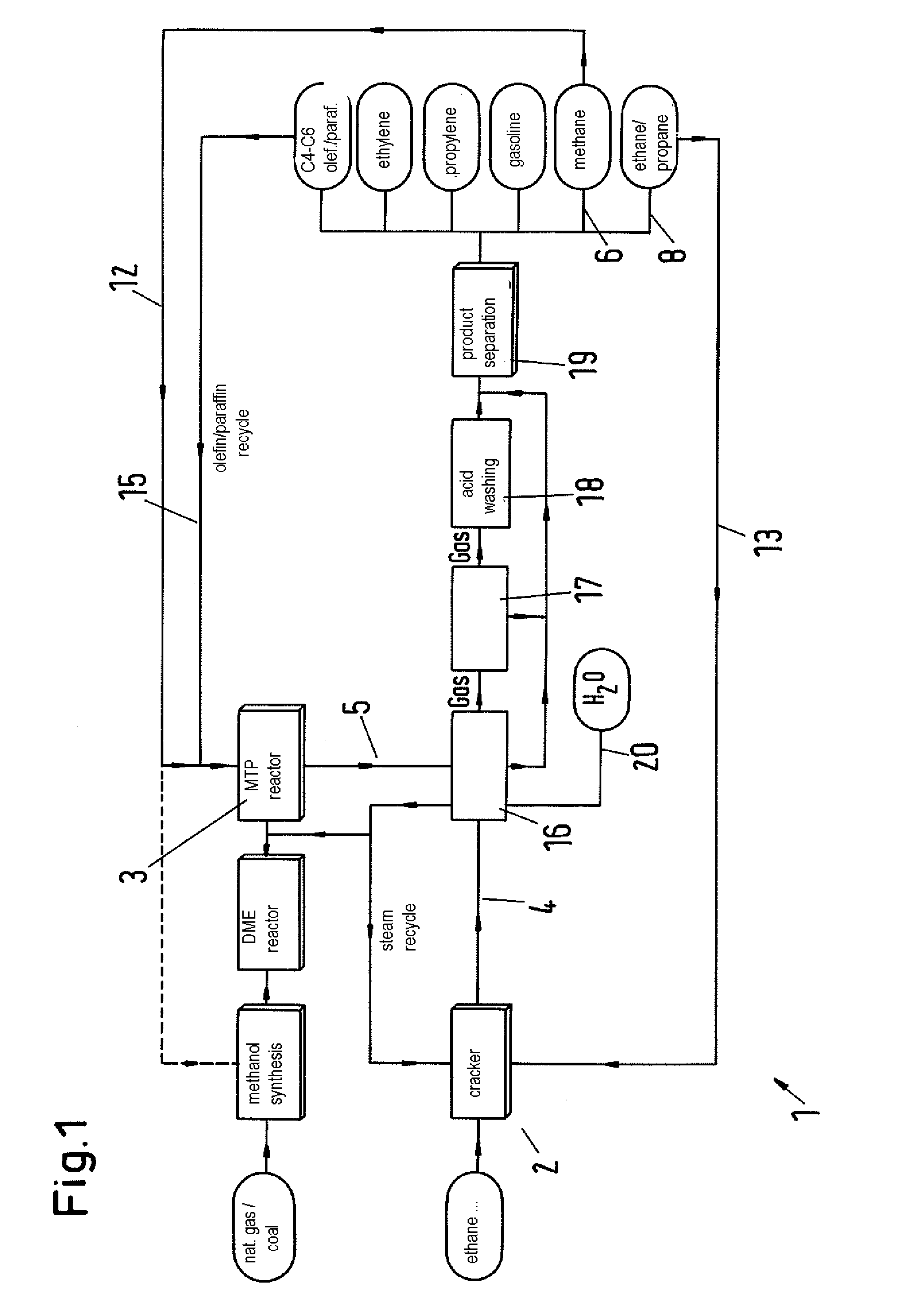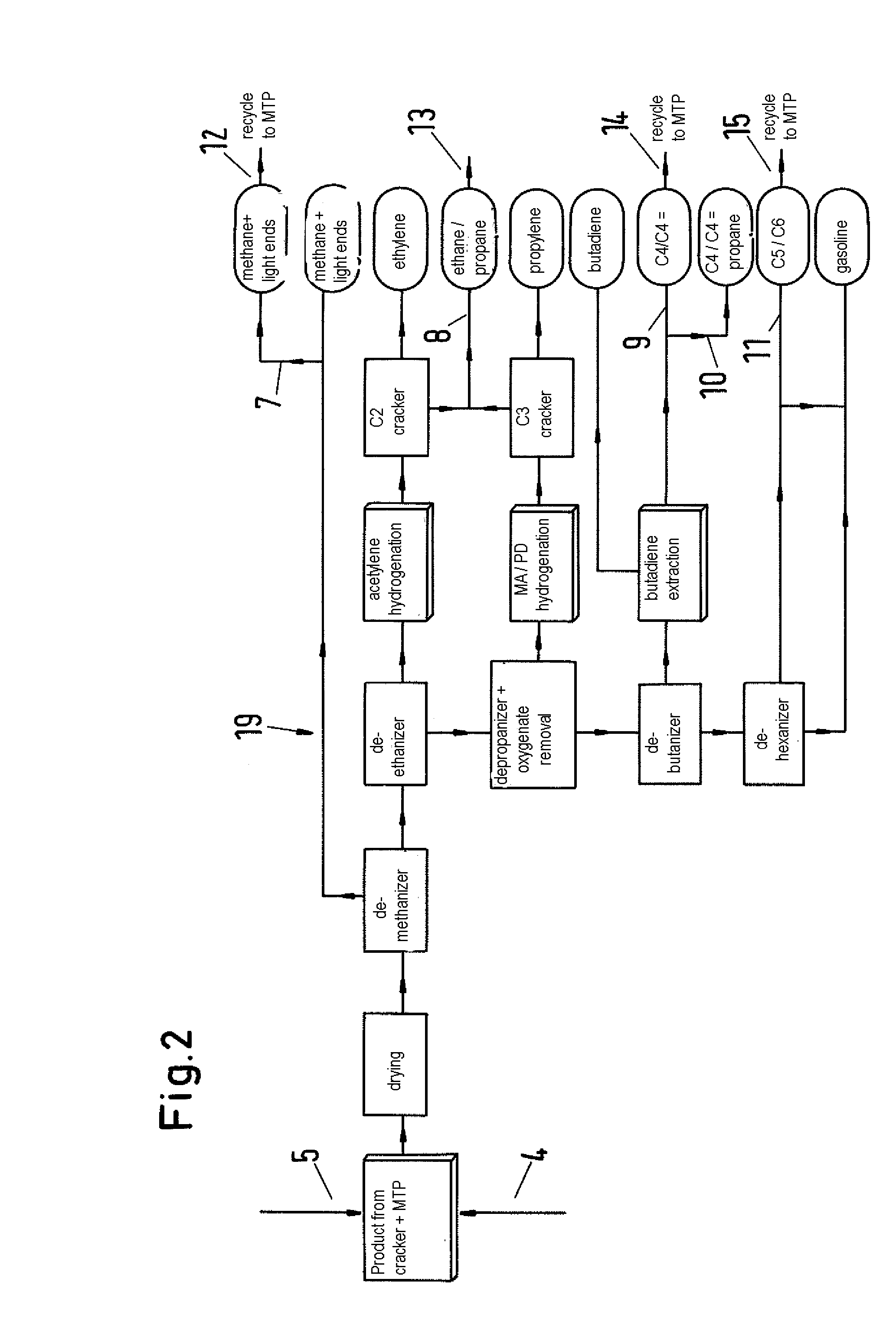Process and plant for producing hydrocarbons
a hydrocarbon and hydrocarbon technology, applied in the direction of hydrocarbon oil treatment, liquid gas reaction process, molecular sieve catalyst, etc., can solve the problems of limited propylene recovery, low propylene yield, and limited utilization of the reaction heat of the two processes integrated in the combined plant, so as to increase the yield of valuable products and save energy.
- Summary
- Abstract
- Description
- Claims
- Application Information
AI Technical Summary
Benefits of technology
Problems solved by technology
Method used
Image
Examples
example
[0031]The product distribution when using a cracker or a plant in accordance with the invention can be calculated on the basis of published results for the product spectrum of a cracker and the process data of the MTP process. For this calculation also the recirculation of various streams analogous to FIG. 2 and the resulting effects on product yields was considered. This includes the degrees of conversion and the selectivities of the various components (ethane and propane in the cracker, C4-C6 olefins in the MTP reactor). The cracker alone was assumed to have a typical world-scale capacity of about 800.000 t / a of ethylene. For the MTP reactor, an upstream mega methanol plant (cf. EP 0 790 226 B1) with a capacity of 5000 t / d of methanol was assumed. The purge rates of the recycle streams were adapted such that realistic ratios between feed and recycle quantities are obtained (C2 purge 5%, C4 purge 5%, C5 purge 20%).
[0032]The results of the integration are listed in the following tab...
PUM
 Login to View More
Login to View More Abstract
Description
Claims
Application Information
 Login to View More
Login to View More - R&D
- Intellectual Property
- Life Sciences
- Materials
- Tech Scout
- Unparalleled Data Quality
- Higher Quality Content
- 60% Fewer Hallucinations
Browse by: Latest US Patents, China's latest patents, Technical Efficacy Thesaurus, Application Domain, Technology Topic, Popular Technical Reports.
© 2025 PatSnap. All rights reserved.Legal|Privacy policy|Modern Slavery Act Transparency Statement|Sitemap|About US| Contact US: help@patsnap.com



